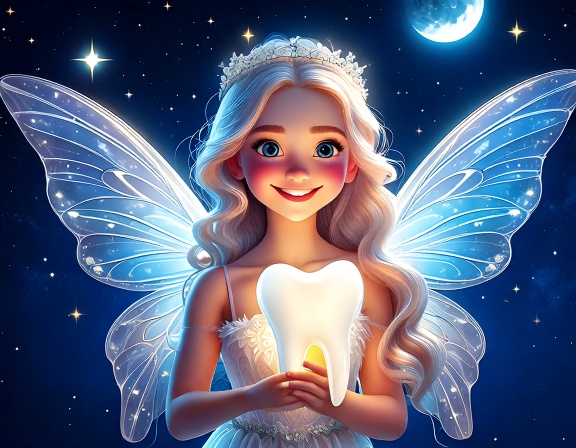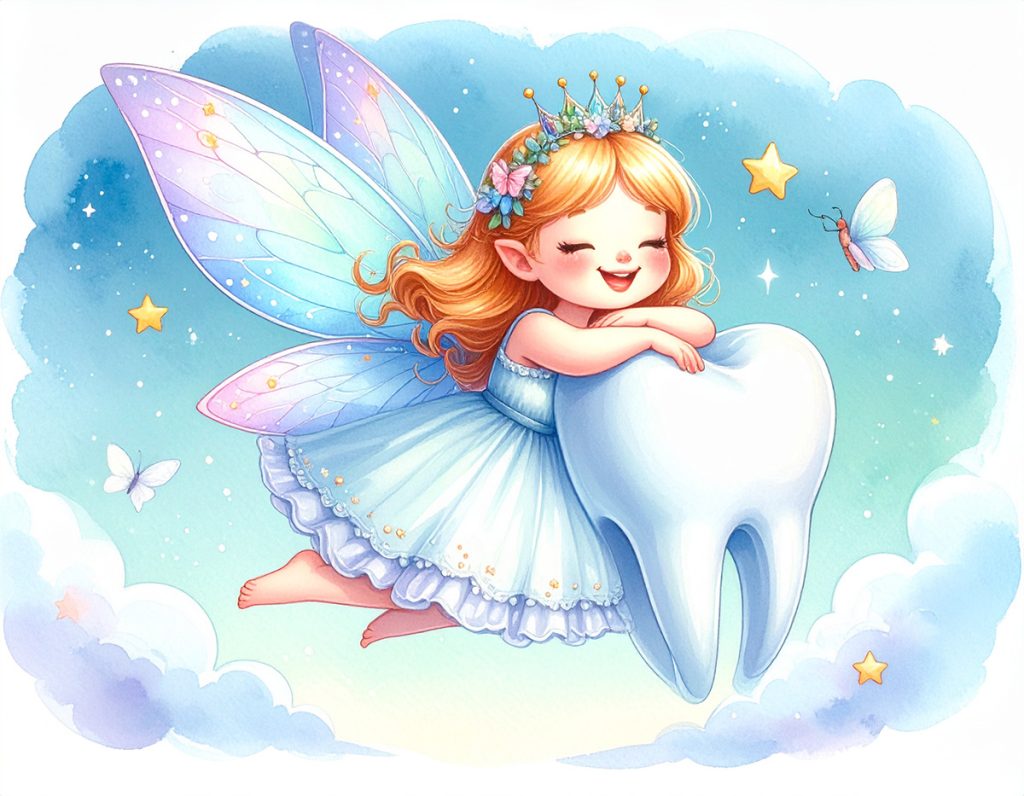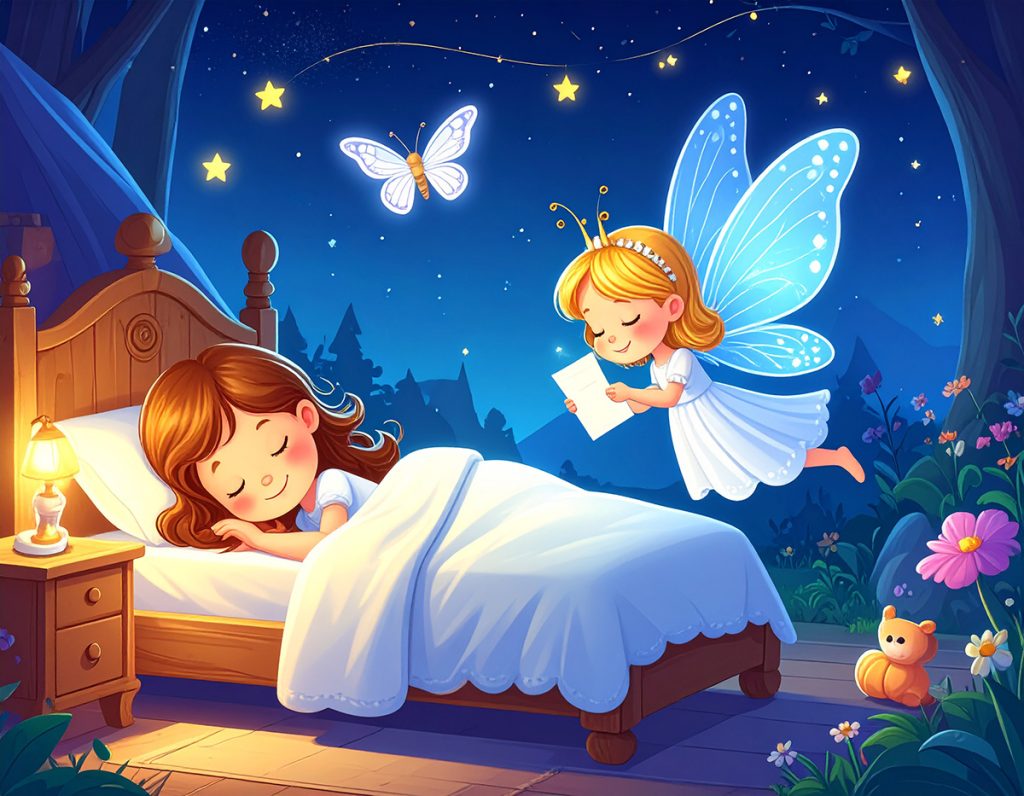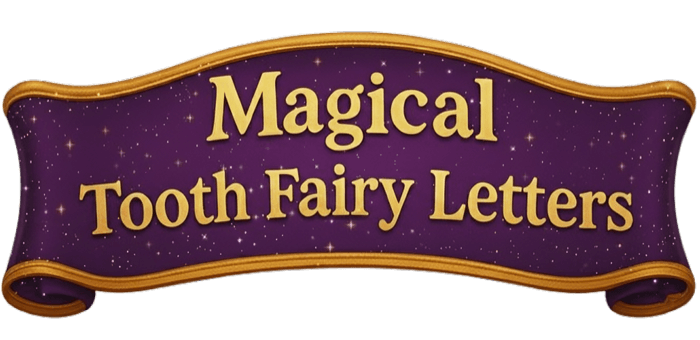Is the Tooth Fairy Real? A Guide for Parents
Why Are We Still Doing the Tooth Fairy Thing in 2025?
Some people ask, “Why are we still doing the whole Tooth Fairy thing in 2025?” And honestly? Fair question.
But let me ask you this—have kids stopped losing teeth? Didn’t think so.
That’s why so many parents still ask, “Is the Tooth Fairy real?”
Every wobbly baby tooth is a tiny little rite of passage. And for a kid, that first loose tooth? It’s terrifying. I mean, think back—remember the panic? The tears? That moment when you were convinced all your teeth would fall out and you’d be stuck sipping soup forever?
Now, what do parents do when their kid is freaked out and clinging to them with a bleeding gum and a fistful of fear?

They tell a story.
A soft, sparkly, comforting story.
The Tooth Fairy isn’t just a cute idea we pulled out of thin air. She’s a parenting tool. A little bit of borrowed magic that makes a scary moment feel exciting. And let’s be honest—we don’t get an endless number of these moments. Childhood moves fast. One day you’re tying their shoes, the next they’re rolling their eyes at your dad jokes.
So when a baby tooth falls out, we get a window. A small one. To make a memory.
They lose a tooth. We gain a parenting win.
And you might be wondering—should you keep the magic alive? What if your kid starts poking holes in the story?
Totally normal. But before we go there, let’s take a step back. Let’s look at where the Tooth Fairy came from, what she means, and how she still manages to sprinkle a little wonder into growing up—even in this wild, modern world.
Where Did the Tooth Fairy Come From?
Ah, the age-old question. Like most legends, the Tooth Fairy didn’t just appear out of thin air one night with glitter and a purse full of coins. Nope—her story is stitched together from bits of folklore, ancient customs, and a whole lot of imagination passed down through generations.
Let’s go global for a second.
Way back in the day, Viking parents would actually pay their kids for baby teeth. Not because they were feeling generous, but because they believed those tiny teeth could bring luck in battle. No joke. Some warriors even strung them together and wore them as necklaces. (I mean… a bit creepy, but okay.)
Meanwhile, in European and Norse folklore, baby teeth were thought to hold magical energy—like tiny talismans with mysterious powers. So what did parents do? They’d bury them. Yep—dug a little hole and returned the tooth to the earth, all in the name of protecting their children from evil. Less about money, more about spiritual security.
Now, hop over to France and Spain, and the story takes a cute turn. The magical collector of teeth wasn’t a fairy at all—it was a mouse. La Petite Souris in France, Ratoncito Pérez in Spain. These sneaky little creatures would crawl under pillows in the middle of the night and leave a coin behind. Same job as our fairy—different wardrobe. No wings, just whiskers. And a reputation for being very generous.
And then there’s Japan, where the tradition looks more like a game of “tooth toss.” Kids literally throw their lower teeth onto the roof and their upper teeth onto the ground. Sounds a little odd, right? But there’s a reason. It’s believed to help their adult teeth grow in straight. It’s all about balance and luck, not money or magic.
As for the Tooth Fairy we know and love today? She made her official debut in 20th-century America. The first time she was mentioned in writing was way back in 1908, and by 1927, she’d landed her first starring role in a short story. But it wasn’t until the 1950s—you know, during the baby boom, when parenting magazines were gospel and suburban traditions were booming—that she really took off.
According to Smithsonian Magazine, the Tooth Fairy has evolved from centuries of folklore and parenting trends.
And here’s the clever part: pairing the loss of a tooth with a reward? Genius. Suddenly, this strange moment of blood and wobble became something to look forward to. Kids got excited. Parents had a sneaky way to encourage dental hygiene. Everybody won.
Want to bring her story to life? Download our Editable Printable Tooth Fairy letters to make each visit extra magical.

What Does the Tooth Fairy Really Symbolize?
Oh come on, you probably already know. But let’s talk about it anyway—because it’s kind of beautiful when you think about it.
First of all, losing a tooth? That’s a big deal for a kid. It’s like their first official “I’m growing up” badge. One minute they’re giggling with a full baby grin, and the next they’re holding a bloody tooth like a war trophy, proudly yelling, “LOOK WHAT FELL OUT OF MY MOUTH!”
It’s wild.
And scary.
I mean, imagine if your own body just started dropping parts off and everyone acted like it was totally normal. Yeah, no thanks.
That’s where the Tooth Fairy comes in. She’s not just a glittery little side character. She’s the comfort in the chaos. She turns a freaky, wobbly, what-is-happening-to-my-mouth moment into a magical little celebration. One small human loses a tooth, and poof—there’s money under the pillow. Talk about turning panic into profit.
She also steps in as part of the Big Three: Santa, Easter Bunny, Tooth Fairy. That trio basically runs childhood. They’re the CEOs of Make-Believe Inc. And their job? To sprinkle magic into the mundane. To make daily life feel like an adventure. The Tooth Fairy keeps that wonder alive just by showing up with a coin and a smile (or, you know, a glitter trail if you’re feeling extra).
And sure, there’s a hidden parenting agenda. Let’s be real—we all use her as a behavioral bribe. “Brush your teeth or the Tooth Fairy might not come.” Works like a charm. She’s basically the dental wing of the motivational squad. Floss, rinse, spit, and maybe—just maybe—you’ll get that shiny dollar.
But mostly? She soothes the worry. That quiet, wide-eyed fear kids don’t always say out loud—“What if I lose them all?” “Will I look weird?”—she wraps that fear in story and sparkle. She makes change feel safe. And a little exciting.
So no, she’s not just about cash and cuteness. She’s a milestone marker. A magic-maker. A tiny hero in the weird and wobbly chapter of childhood.
Is the Tooth Fairy Real? Should You Keep the Magic Going?
Let’s break it down, because there are pros and cons. And you know what? They’re all valid.
Sure, eventually your kid might figure it out and hit you with the dreaded “Wait… you LIED to me?!”
Oof.
Cue the dramatic gasp, the furrowed brows, the trust issues. (Okay, not really—but it feels that way for a second.)
On the flip side? Believing in the Tooth Fairy boosts their imagination, keeps their sense of wonder alive, and turns something kind of gross—like, a literal body part falling out of their face—into something magical.
Yes, I know. The pressure is real.
One day you’re slipping a dollar under the pillow, and the next thing you know, you’re scrolling Etsy at midnight for glitter coins and fairy-sized scrolls.
Or check out these fun Tooth Fairy accessories on Etsy to save yourself the search!
Been there.
It’s always been about the intention—your effort, your care, your love disguised as a winged creature with great nighttime stealth skills.
Whether you go big or keep it simple, the magic is already there.
And honestly? You’re doing great. Glitter or no glitter.
Creative and (Low-Stress) Tooth Fairy Ideas
Money Ideas
Sparkly coins or another currency to make it more magical
Leave different surprises based on the kind of tooth (molar, front, etc.)
Suggest in the note that the Tooth Fairy gives better rewards for clean, shiny teeth
Have some cash or change hidden in the Fairy’s emergency fund drawer
Forgot to do it? Say she got caught in sky traffic — works every time
Notes and Certificates
Tiny hand-written note from her, left under the pillow
Tooth receipt — like she’s running a tooth-collecting business
Tooth Fairy certificate (for bravery, clean teeth, etc.)
Read a Tooth Fairy book before bed as part of the exchange
Fun Props and Crafts
Make a custom “Tooth Pillow” with a tooth pocket
Use a jar with fairy lights for the tooth exchange
Create a tooth countdown chart (e.g. “18 teeth to go!”)
Use glitter or confetti as “fairy dust”
Keep a tooth journal or memory box to track each visit

How Do I Transition My Kid Out of the Myth?
Let them become the Tooth Fairy for a younger sibling or cousin
Frame it as a graduation to the “big kid” status
Create a new ritual (memory box, journal entries, envelopes)
Emphasize the joy they felt believing. They can pass that on!
Now, maybe you’re wondering… does it even matter if we keep the whole Tooth Fairy thing going?
Short answer? Yeah. It kinda does.
Because it’s not about tricking your kids or pulling some long con with glitter and spare change.
It’s about marking a moment.
A wiggly, wide-eyed, growing-up-too-fast kind of moment.
It’s about celebrating milestones — the tiny ones that sneak up on us, like the first lost tooth, the bravery to let it go, and the joy of finding something magical in return.
It’s this beautiful blend of science (yay, dental hygiene!), emotion (hello, childhood nostalgia), and imagination (bring on the sparkle).
Whether your kid believes for three years or ten, trust me — the memory sticks. The magic matters.
And in a world that feels like it’s always speeding up… the Tooth Fairy lets us all slow down.
Just for a night. Just long enough to make something small feel really big.
So yes — enjoy it. Milk the magic. Make the mess.
Because someday, that little gap-toothed grin will be just a photo.
But the feeling? That stays.
Bonus Tips: What If They Ask If She’s Real?
If your kid asks, “Is the Tooth Fairy real?” — always reply with, “What do you think?” and adapt from there.
If they find out you were the Tooth Fairy – remind them it was all for the magic and their joy.
If you want to retire the Tooth Fairy – frame it as a big kid milestone and make the last visit a memorable one.

